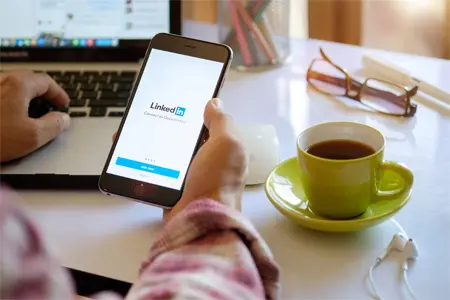How to Get Started on LinkedIn
Published: Oct 31, 2016

LinkedIn can be one of the most valuable networking tools to help you land a job or internship. Even if you aren’t currently looking for a job, you will be at some point, so it is crucial to maintain an up-to-date profile that highlights your most impressive skills and accomplishments.
While it is common knowledge that creating a LinkedIn account is important, you might not know how to use the platform to the best of your ability. Here are some guidelines to help you create a winning profile on LinkedIn and maximize your networking opportunities.
Creating Your Profile
Before you start building your network on LinkedIn, the first thing you need to do is to create a profile. That starts with choosing a photograph of yourself that is work-appropriate — you want to give off the impression that you would represent a company well. The photo should be a high-quality headshot of just you, in which you’re smiling and making direct eye contact with the camera.
Next you will need to input your location and industry — make sure these reflect your desired fields, especially if you are looking to move to a new place or to switch industries.
The body of your profile should read like your résumé, explaining why you are a qualified and desirable job candidate. The goal should be to showcase traits and skills of yours that demonstrate how you would add value to a company. In the “Experience” section, be sure to use keywords that appear in job descriptions for your desired role, so that recruiters using Search Engine Optimization will easily find your profile. Under the “Additional Info” section, do not forget to provide your email address so recruiters can contact you directly.
A notable feature that differentiates your LinkedIn profile from your résumé is the ability to join networking groups. You should request to become a member of alumni groups and industry organizations related to your field, and then participate in the groups regularly. These groups are a fantastic way for you to meet new contacts and discover job opportunities relevant to your interests.
Optimizing Your Profile Views
It is essential to update your profile regularly so that it reflects accurate information, because potential employers may view it at any given time. Many employers check candidates’ LinkedIn profiles along with their résumés when considering them for positions, so it is vital that your profile be consistent with your résumé, down to the specific dates you started and ended each previous role. You want your profile to enhance the impression that employers have of you, not detract from it.
If you update your profile and post on a consistent basis, LinkedIn will notify your network of these changes, which should drive more traffic to your profile. More views on your profile mean more people who are aware of your experiences and accomplishments, who might connect you with a job down the line.
Check the “Who’s Viewed Your Profile” section regularly. You can see whether recruiters or employees at companies that interest you are looking at your profile. From there, you can reach out to them — or ask a mutual connection to introduce you — in order to discuss job opportunities.
Making Valuable Connections
Now that you have created a robust LinkedIn profile, it’s time for the most important part: making connections. You may be tempted to connect with anyone you’ve ever known, with the rationale that more connections translates to more potential job opportunities, but that is not necessarily the case. LinkedIn is different from Facebook — you do not want to dilute your network with meaningless connections that are irrelevant to your professional life. Connecting with someone you don’t know at all can actually hurt you, if a recruiter has a negative perception of that person and sees them listed as one of your mutual connections.
So who should you connect with on LinkedIn? Start by connecting with co-workers you have had a positive working relationship with in the past, as they can attest to the quality of your work and provide a reference for you if needed. These are valuable contacts because they may know of job opportunities that would be a strong fit for you and refer you to them.
It is also important to connect with peers and older acquaintances who work in your desired field. As a general guideline, you want your contacts to be relevant to your desired industry and to contribute positively to your network. Ultimately, you should strive to make as many valuable connections as you can through LinkedIn, as they may be paramount to helping you land your dream job.